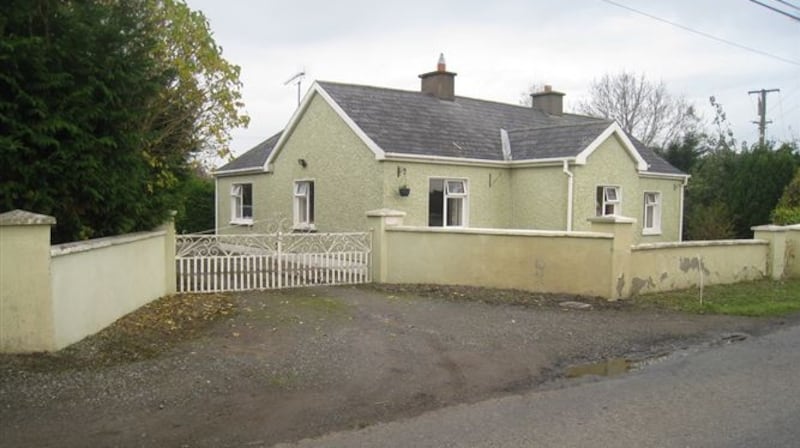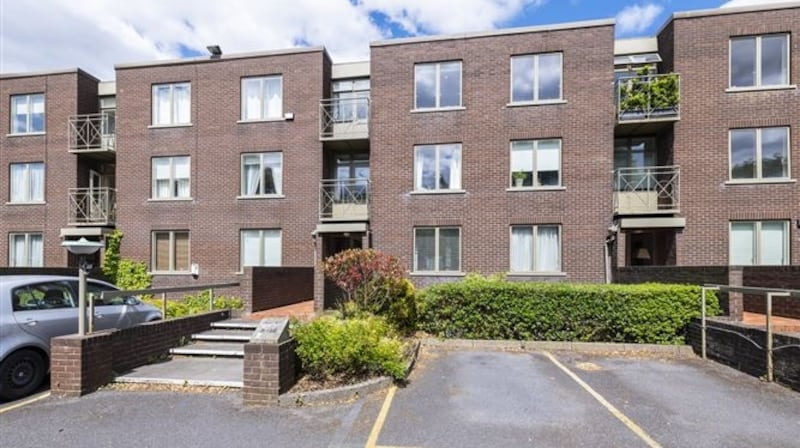Thinking of buying a home or an investment property this autumn? Or maybe you’re selling? If you are then you’ll be wondering where house prices will go next. While being prescriptive is a near-impossible task, there are factors that can give you an insight into just what we might expect this autumn.
The bad news for buyers is that the almost categorical consensus among economists and commentators alike is that, yes, house prices are expensive, but the fundamentals underpinning this growth appear to have some way to go yet. So don’t expect a significant slowdown any time soon.
Most recently, ratings agency S&P recalled some ghosts of years past when it asserted that the Irish market had some years of growth ahead of it, before easing into a “soft landing”.
“Are there any warning signs? I don’t think so. It seems to be that we’re in for a period of continued price and rent inflation,” says John McCartney, director of Savills Ireland Research.
But of course the property market is not homogenous across the State – or even between cities. So here are some considerations to bear in mind for the autumn selling season.
It could be a good time to buy now
Yes, take note of the “could”, but if economists’ forecasts prove to be correct, then it could be a good time to buy. That house you’re looking at today could be worth a whole lot more in a few years’ time. Based on S&P’s predictions, for example, of growth of 9.5 per cent this year, 8 per cent in 2019, 7 per cent in 2020 and 6 per cent in 2021, a house worth €300,000 today would be worth 402,000 by the end of 2021.
“The supply of new housing isn’t enough to even keep up with the additional demand that’s coming in due to population growth . . . So it seems it will be a few years yet before supply catches up with demand,” McCartney notes.
Conall Mac Coille, chief economist at Davy, agrees. "There is a fundamental mismatch between not enough supply and very strong demand," he says. This suggests that prices will continue to rise in the interim.
On the other hand, even if prices rise as forecast, who is to say that a collapse in employment on the back of a harsh Brexit won’t do the same to property prices thereafter?
And it may not even need that; the Economist warned some time ago that one of the fallacies that people like to buy into about property markets is that a fixed supply of land and rising population mean house prices will always rise. It doesn't have to be so.
Ireland has multiple mini markets
Yes, house prices nationally rose by 12 per cent in the year to June. But this doesn’t mean that properties right across the State rose by this amount. In the midwest, for example, the price of houses rose by as much as 22.5 per cent in the same period, while apartments outside of Dublin rocketed ahead by more than 20 per cent.
However, growth was far more subdued elsewhere. In the Border counties, for example, price growth was significantly less, at below 5 per cent, while house price growth in south Dublin, where much of the recovery first began, has slowed to less than 6 per cent.
“Not surprisingly, the most stretched places in terms of affordability have seen prices slow more rapidly,” says Mac Coille, noting that the average mortgage people took out in the second quarter of the year was up only 5 per cent on the previous year.
Getting a good gauge on price growth is further complicated by the fact that transaction levels are so low
So just because prices are growing nationally at a certain pace, it doesn’t mean that this is the case in your particular area.
“Price growth is not uniform across the country,” says Mac Coille. And even within a geographical area, growth will perform differently across various sectors of the market.
Like the most expensive houses in Dublin. “The top end of the market has slowed down, there is no doubt about that,” says McCartney, adding that properties worth more than €1 million are now taking longer to sell.

Figures from the Institute of Professional Auctioneers and Valuers back up this assertion, with its latest report showing that, in Dublin 4, the average price drop for a four-bed semi was €150,000 in the first six months of the year, bringing the average price down from €1,375,000 to €1,225,000.
And it can be even more dramatic. The Irish Times reported last week on the childhood home of Samuel Beckett in the upmarket suburb of Foxrock. Cooldrinagh was originally put on the market in 2013 for €4.25 million, and the price was subsequently lowered to €3.5 million. Five years on, it is still seeking a buyer and, now under a new selling agent, is asking €2.75 million.
Getting a good gauge on price growth is further complicated by the fact that transaction levels are so low. For example, in the midwest region highlighted above, there were little more than 4,000 sales in the 12 months to June 2018.
Supply is picking up – or it’s taking longer to shift
New builds are undoubtedly starting to take off, with McCartney pointing to a 27 per cent year-on-year increase in the first half of this year. But it’s not yet enough to stabilise prices – “ultimately my view is too many heads and not enough beds,” he says – but at least it’s going in the right direction.
There also appears to be an uptick in the number of second-hand properties coming to the market. According to myhome.ie, some 4,880 properties were listed for sale in Dublin in August. While it might be still some way below what many might consider to be a normal market, it is up 28 per cent on 2017 figures.
The growth in supply is coming from a number of sources, including an uptick in new developments. However, it could be posited that are more people putting properties on the market – or is it that they are just taking longer to sell?
Affordability is hitting home – but cash buyers abound
With Central Bank rules limiting buyers to a multiple of 3.5 times their income, unless they get an exemption, it would be realistic to expect that there is a natural ceiling on house price growth. After all, if people can only borrow so much, house prices can go only so far.
The Economist says prices in Dublin are overvalued by 25 per cent when compared with incomes, while the Banking & Payments Federation Ireland (BPFI) argues that price to income ratios are now at the highest levels since the series began in 2012 – which hurts affordability.
Saving enough for a deposit also becomes more challenging as prices continue to rise. The €20,000 that would have once secured you that home for €200,000 has now crept up to €25,000.
This is particularly true in Dublin, where figures from the BPFI show that recent first-time buyers in the capital had to find a median deposit of €54,389 to secure their home. Those trading up, or down, had a significant downpayment of some €125,000.
With rents limiting the capacity of people in the former group to save, and childcare costs and negative equity in the latter, it’s getting tougher to buy a home.
Look at Killart, a scheme of 17 three-storey properties for sale in Cabinteely, in south Dublin. With four properties sold before the scheme was officially launched, 13 were brought to the market in July 2017 at prices ranging from €725,000 to €745,000. However, figures from the property price register show that since then just seven houses – including the original four – have been sold.
Moreover, the latest sale at this development, added to the register in July, was for €649,999. The selling agent also recently changed from Beirne and Wise to Knight Frank.
But the market is not just being driven by those who need financing: cash buyers still proliferate.
“Cash remains a huge part of the market,” says McCartney, noting that of the 28,555 deals in the first half of the year, almost half, or 48 per cent, were by cash buyers.
He attributes the trend to a number of different types of buyers – institutional buyers acquiring multifamily units; smaller investors chasing yield; and owner occupiers selling up and trading down to smaller properties.
It’s hard to get an exemption
With the end of the year fast approaching, many banks will be reluctant to give out new mortgage exemptions which allow prospective homebuyers borrow more than 3.5 times their income, or pay less than 10 or 20 per cent as a deposit. This is because they may already have offered as many exemptions as they are allowed under the rules.
With potentially fewer buyers with bigger potential budgets, if you’re bidding on a house this autumn, prices might be softer than expected.
As Mac Coille notes: “You’d expect to see things start to slow in Dublin as long as the rules are held in place.”
Latest figures from Daft.ie show that average rents are now at an all-time high of €1,304 across the State
Of course, some people argue that the rules are too tough, and that restricting how much people can borrow is unfair, but Mac Coille argues that allowing everyone to borrow what they want still wouldn’t get them what they want.
“If everyone was allowed to have an exemption, they can’t all buy the same house. All that would happen is that prices would increase faster,” he says, adding that, without the rules, prices could already have soared far higher.
“Quite possibly we’d be back to peak levels,” he says.
Rising rents will push more to buy
Just as supply starts to pick up, so too might demand, pushing the pendulum further again towards the latter. One factor driving this could be the continued increase in rents. Latest figures from Daft.ie show that average rents are now at an all-time high of €1,304 across the State, and €1,936 in Dublin.
This means that, provided someone can save the 10 per cent or so needed to buy a property, the sums are still in favour of buying, rather than renting. Recent figures prepared by housebuilder Cairn Homes indicate that it could now be as much as 42 per cent cheaper to buy a home in Dublin than to rent.
Not only that but parents looking to avoid astronomical rents in the capital while their children are at college might also consider investing in property.
According to the IrishMortgages app, which calculates how much of a mortgage you can afford depending on the rent you’re paying, a person or couple paying €1,936 in rent a month in Dublin could swap this for a mortgage of €450,508, or a house purchase of about €500,000.
In Limerick, rent of €1,109 a month could buy you a house worth about €280,000, while in Cork you could get a house worth about €327,000 if you’re paying rent of €1,266.
What’s happening in the property market

Going up: three-bedroom bungalow in Ballinacarrow, Ballynacarrigy, Co Westmeath.
Original asking price: €110,000
Today’s asking price: €125,000

Going down: top-floor, two-bedroom apartment in Blackrock, Co Dublin.
Original asking price: €445,000
Today’s asking price: €420,000 (sale agreed)





















